

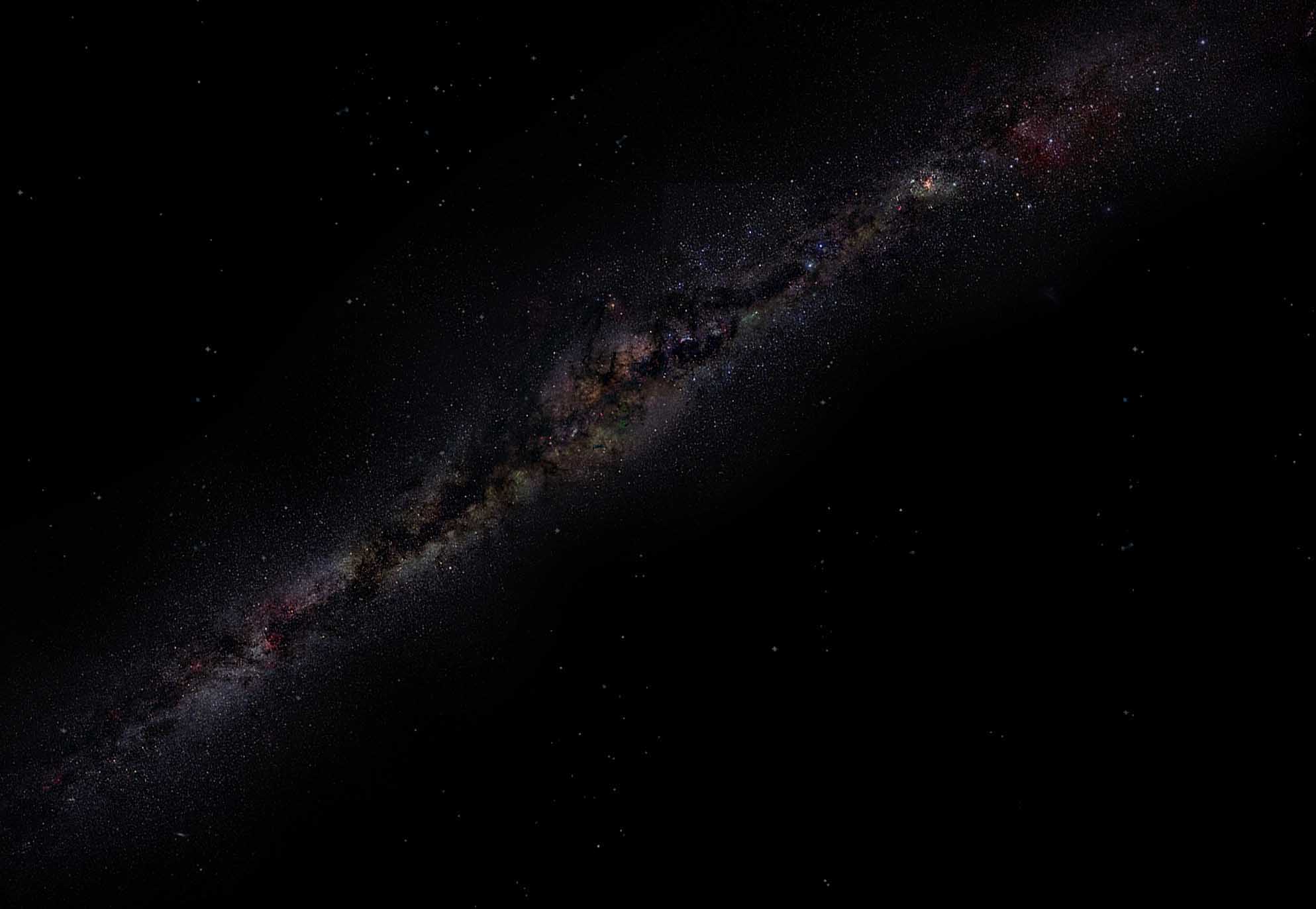
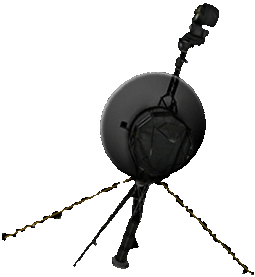

Appearance-wise, Neptune looks a lot like a miniature, blue version of Jupiter—kind of a "smurf" version of Jupiter! (1.6.x) (1.4.1)
Neptune, the eighth and furthest known major planet from the Sun, has only just completed one orbit since its discovery in 1846! (1.6.x) (1.4.1)
Neptune's moon Triton is the Solar System's only major moon which orbits in the opposite direction to its parent planet's rotation! (1.6.x)
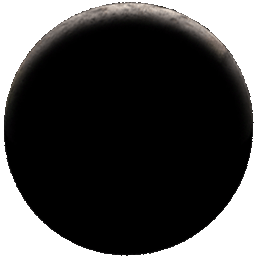
CLOUDTOP VIEW
A gas giant, Neptune has no solid or liquid "surface". So its "visible surface" is really the top of its complex cloud system! As no spacecraft has yet sent back pictures from within or directly above the planet's awesome cloud layers, artists' depictions will have to suffice for now.
SkyMarvels™ Illustration: Above Neptune's Clouds
NASA Illustration: Cloudtops of Neptune..
Proteus orbits very close to Neptune's equatorial plane, while Triton and Nereid stray far from it!
CELES-TIPS
The following will help you enjoy this page's 1.6.x and 1.4.1 links that run events directly in CELESTIA. If you're new to the program, these tips will also help you learn to use it.
Are you unfamiliar with our 1.6.x and 1.4.1 links? For an explanation click here.
You'll find more information about many of CELESTIA's controls on our Learning Center page.
NEPTUNE
View Neptune in 3-D 3-D in Orbit
Current Views and Conditions from Earth Major Moons
Current Location in the Constel. Skypath 2025
Current Location in Orbit
Physical Properties:
Equatorial Size: Compare in 3-D
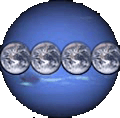 Radius: 24,764 km
Radius: 24,764 km
Diameter: 49,528 km
Diameter (Earth = 1): 3.883
Rotational Flattening: 0.0171
Mass (Earth = 1): 17.147
Volume (Earth = 1): 57.74
Mean Density (Water = 1): 1.64
Mean Density (Earth = 1): 0.297
Gravity at Apparent "Surface" (Earth = 1): 1.14
Axial Tilt: 28.32° ![]()
Where Poles Point ![]()

Neptune's "tilt" ![]() ,
,
relative to its own
orbit, is similar to the
tilts of Earth, Mars
and Saturn, rela-
tive to their orbits!
Rotation Period:
Synodic ("Day" in Earth hours): 16.11
Sidereal (in Earth hours): 16.11
Note: Earth Day Lengths
Mean Solar: 24.0000 hours (24h00m00s)
Sidereal: 23.9345 hr (23h56m4.1s)
Note: different latitudes on the Gas Giants
rotate at different speeds.
Albedo (geometric): 0.41
Magnetospehere:
Magnetic Field (Earth = 1): 26
Magnetic Polarity: opposite that of Earth
Comparison
NASA's Overview of Neptune
 JPL Photojournal page
JPL Photojournal page
Wikipedia page
Voyager 2 Spacecraft in 3-D:
#1 #2 ![]() #3 Location
#3 Location
Ring System: Yes (very faint)
Wiki. Rings of Neptune page
Neptune Structure
Compared to Other Outer Planets
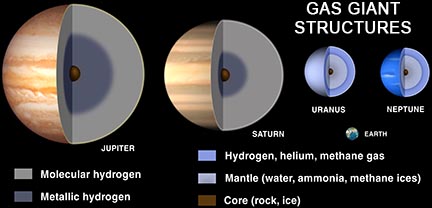 Planet Classifications:
Planet Classifications:
Outer Planet (along with Jupiter, Saturn & Uranus)
Ice Giant (mostly hydrogen, helium & ices)
Superior Planet (has larger orbit than Earth)
Neptune Orbit:
(1.6.x)
(1.4.1)
Period: 164.79 Earth years
Distance from Sun:
Mean (Earth = 1 AU): 30.047 AU
Mean: 4,495,060,000 km
Perihelion: 4,444,450,000 km (29.709 AU)
Aphelion: 4,545,670,000 km (30.386 AU)
Velocity:
Mean: 19,458 km/hr
Min: 19,332 km/hr
Max: 19,800 km/hr
Eccentricity: 0.0113
Inclination to Ecliptic: 1.769°
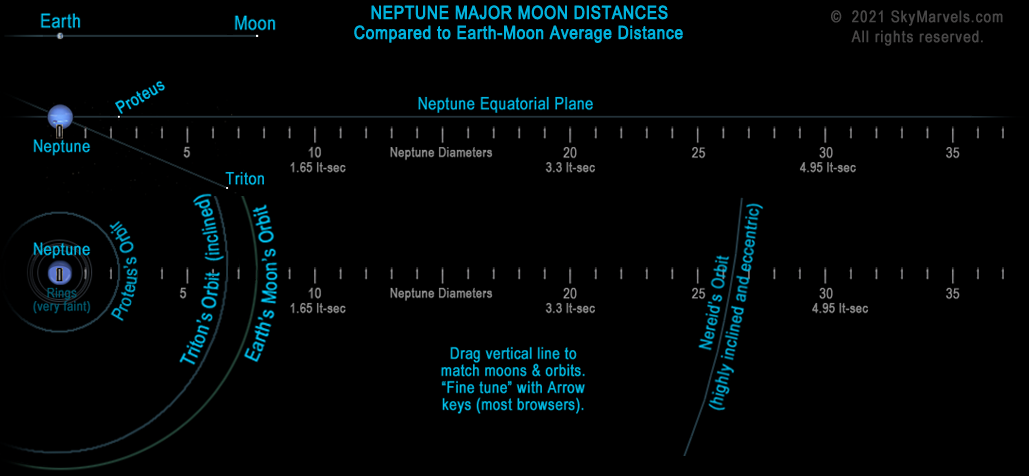
Neptune Moons: at least 14 (more suspected)
Major Moons: 3
Current Pos. of Triton & Nereid Viewed from Earth
Find Cur. Major Moon Pos. with NASA/JPL Orrery
Opens showing Neptune. Scroll out with
mouse-wheel to see major moons in orbit.
Compare to Other Moons
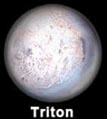 Triton
Triton
![]() In 3-D Rotating
In 3-D Rotating
Diameter: 2,706.8 km
Rota. & Orb. Period: 5.877 d
Orbit: Retrograde
![]()
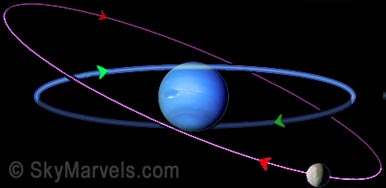
Voyager at Triton Video
![]()
Neptune on Triton's Horizon
Wikipedia Triton page
Proteus ![]()
Size: 440 km x 416 km x 404 km
Rota. & Orb. Period: 1.122 d 
Wikipedia Proteus page
Nereid
![]()
Mean Diameter: 340 km (irreg.)
Orbital Period: 360.13619 d
Wikipedia Nereid page
Orbits
NASA's Neptune Moons page
![]()
Wikipedia's Moons of Neptune page
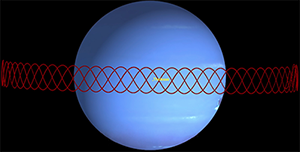
Two of Neptune's minor moons,
Naiad and Thalassa, exhibit an
intriguing 73:69 orbital resonance!
Partial Information Source: NASA Fact Sheets
NEPTUNE'S SWARM OF MOONS
ADJECTIVES MEANING
"pertaining to Neptune"
Neptunian
Poseidian (from Greek god, Poseidon) obscure
VOYAGE OF DISCOVERY
video credit: NASA JPL-CalTech
NASA's Voyager Mission Overview
Home Intro News Gallery Sky-Gifts Bonuses Tips
Learning Ctr Help Links Credits Legal Contact Us
© 2007-
by Gary M. Winter. All rights reserved.
Interested in political cartoons and humor?
Check out The HIPPLOMATS™.
SkyMarvels, Sky Marvels, SkyMarvels.com, NEPTUNE, Voyager, Voyager 1, Voyager 2, celestia4all, celestiaforall, CELESTIA, astronomy, space, simulations, animations, downloadable astronomy posters, stars, planets, Inner Planets, Outer Planets, Inferior Planets, Superior Planets, moons, asteroids, comets, Oort Cloud, galaxy, galaxies, Milky Way, Andromeda, globular clusters, binaries, quasars, black holes, supermassive black holes, telescope, telescopes, planetarium, software, freestuff, satellites, add-ons, addons, scripts, eclipses, Solar Eclipses, Lunar Eclipses, Solar Eclipse Finder, Lunar Eclipse Finder, mutual eclipses, transits, occultations, Solar System, CELES-TOOLS, celeSTARrium, CELX, CELX programming, Freebies, Bonuses, multiple views, atronomical unit, light year, parsec, meteors, meteor showers, Perseids, Geminids, Leonids, barycenter, time, Time Zones, tides, alignments, conjunctions, oppositions, seasons, apogees, perigees, aphelion, perihelion, Earth, Luna, Mercury, Venus, Mars, Jupiter, Galilean Moons, Io, Europa, Ganymede, Callisto, Saturn, Titan, rings, Uranus, Neptune, Triton, E-MSpectrum, electromagnetic spectrum, astronaut, equinoxes, solstices, precession, rotation, spin, inclination, tilt, Ecliptic, orbits, ellipse, parabola, hyperbola

Donate safely with: PayPal
and receive one or more
Sky-Gifts. Your support is greatly appreciated!
NOTE: you do not need a PayPal account to donate.
SKY VIEWING
SOLAR SYSTEM
THE SUN
MERCURY
VENUS
EARTH
THE MOON
MARS
JUPITER
SATURN
URANUS
NEPTUNE
SMALLER WORLDS
STELLAR OBJECTS
EXOPLANETS
DEEP-SKY OBJECTS
SCALE OF THE COSMOS
———————
SKY-FUN / SKY-GAMES
NEPTUNE FUN FACTS
Though it is farther from the Sun, Neptune is warmer than Uranus!
Neptune possesses the most violent winds of any planet!
Deep in Neptune, scientists think, it "rains diamonds" !
Neptune's magnetic field is offset substantially from its rotational axis! By roughly 47°—more than that of any other planet!
There is still a dispute over who discovered Neptune!
The orbital period of Nereid is nearly an Earth-year long!
The same side of Triton al- ways faces Neptune!
The orbits of Triton and Proteus are almost cir- cular, while the orbit of Nereid is very elongated!
Triton orbits Neptune in
a retrograde direction
and is thought to be
a "captured moon"!
ELEMENTS OF NEPTUNE'S MAJOR MOON ORBITS
| Period (Earth Days) |
Orbital Inclin- ation |
Radius (103 km) |
Eccen- tricity |
|
|---|---|---|---|---|
| Pro | 1.122 | 0.04° | 117.647 | 0.0004 |
| Tri | 5.877 | 157.34° | 354.76 | 0.000016 |
| Ner | 360.1 | 7.23° | 5,513.4 | 0.7512 |
NEPTUNE INTERACTIVES
QUICK ACCESS LIST
Note: some links are echoed elsewhere on this page and may include descriptive text.
Links to interactive features that show Neptune's orbit in 3-D can be found on our Solar System page
NASA's Voyager Mission Overview
Neptune Viewer lets you find the tilt of Neptune & its rings for any time and date.
Neptune Moon Tracker allows you to generate and download diagrams of the locations of Neptune's moons and its Adams Ring over spans of time.
SKYMARVELS™
POSTERS FEATURING NEPTUNE
SKYMARVELS™
VIDEOS FEATURING NEPTUNE